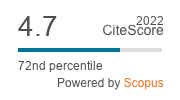In the decades to come, the one factor that will likely have the greatest effect on the economics of the mycotoxin problem is climate change. This article reviews the current state of known science on how the global climate has been changing in recent decades, as well as likely climate change trends in the near future. The article focuses in depth on how climatic variables affect fungal infection and production of specific mycotoxins in food crops, and how near-future climatic changes will shape the prevalence of these mycotoxins in crops in different parts of the world. Because of regulatory limits set on maximum allowable levels of mycotoxins in food and feed, growers will experience economic losses if climatic factors cause certain mycotoxins to become more prevalent. A case study is presented of how maize growers in the United States will experience increased economic losses due to slightly higher aflatoxin levels in maize, even if those levels may still be below regulatory limits. We discuss the overall expected economic impacts of climate change-induced mycotoxin contamination worldwide – not just market-related losses, but also losses to human and animal health and risks to food security. Aflatoxin is the mycotoxin that is most likely to increase under near-future climate scenarios; and thus is likely to pose the greatest amount of economic risk of all the mycotoxins.
How climate change and regulations can affect the economics of mycotoxins
F. Wu Related information
1Department of Food Science and Human Nutrition, Department of Agricultural, Food, and Resource Economics, Michigan State University, 496 Wilson Rd, East Lansing, MI 48824, USA.
*fwu@msu.
, N.J. Mitchell Related information*fwu@msu.
1Department of Food Science and Human Nutrition, Department of Agricultural, Food, and Resource Economics, Michigan State University, 496 Wilson Rd, East Lansing, MI 48824, USA.
Please note:
If you have attempted access to this content via the ‘Download PDF’ option available in ‘Site tools', and have been denied access to your licensed content, please try again via the ‘Full-text’ tab above.
Your Access Options
Log In
If you have personal access to this content, log in with your username and password here:
Log In
2023 Journal Impact Factor
2.0
source: Journal Impact Factor 2023™ from Clarivate™

Purchase Options
Institutional Offers
For institutional orders, please contact [email protected].



